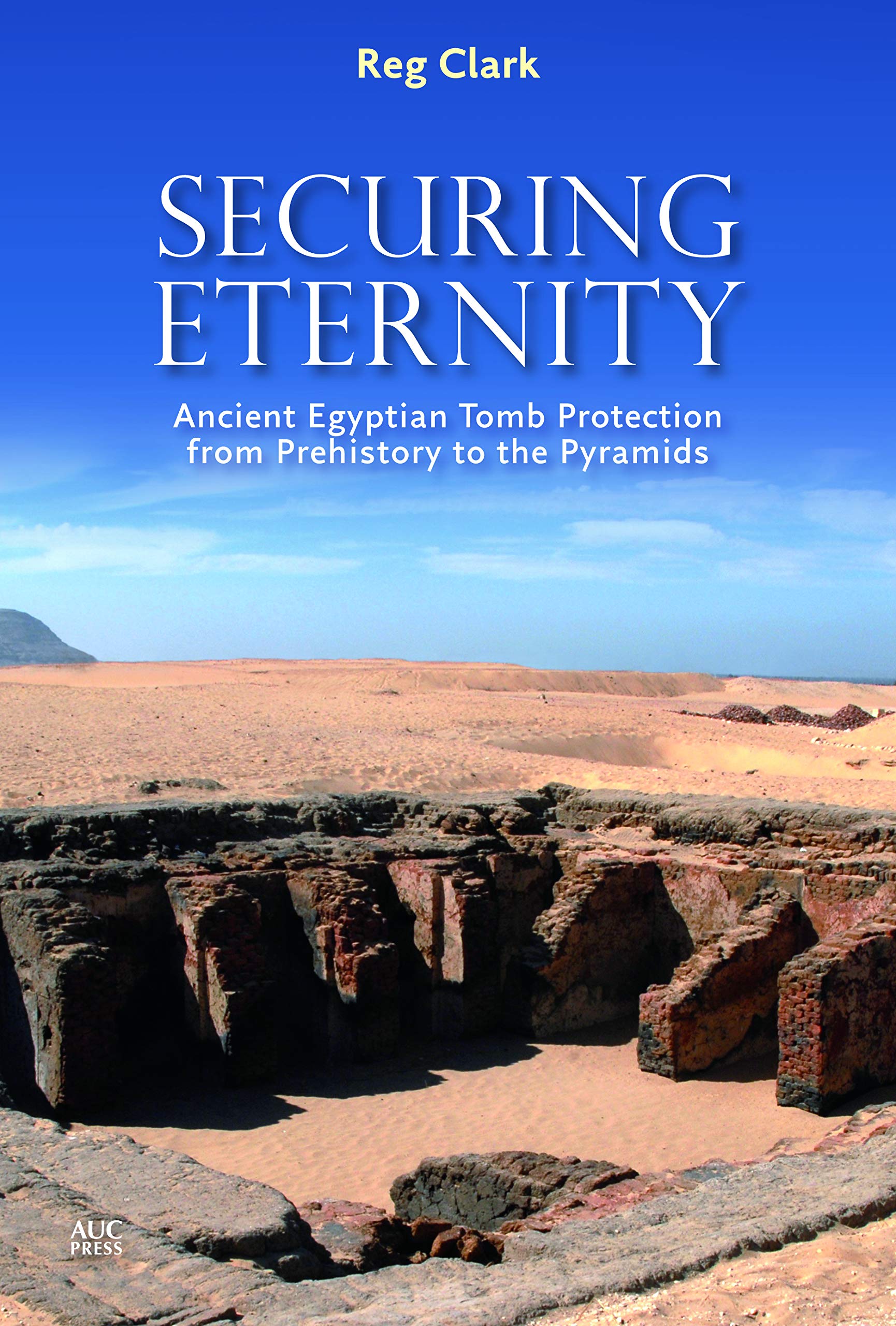
Securing Eternity: Ancient Egyptian Tomb Protection From Prehistory to the Pyramids
Dianna Wray
Reg Clark.
AUC Press, 2019.
“The overwhelming evidence of the investment made by ancient Egyptians in the construction, decoration, and protection of their tombs suggests that for them, the tomb was far more than just a practical method of hygienically disposing of their dead.”
—From Securing Eternity
For Ancient Egyptians, the tomb served as a crucial part of the afterlife, a place where spiritual elements of a person’s being, ha and ka, reunited with the body each night. Thus, every tomb was outfitted with what the deceased would need or want to enjoy themselves. Although this practice attracted grave robbers in droves, for centuries ancient Egyptians opted to alter their burial architecture and security systems versus removing the temptation of well-stocked tombs, Clark writes. Driven by his fascination for Egyptian tomb security —sparked during his first visit via a robber’s tunnel to a stone-lined burial chamber—Clark has written a thorough guide to Egyptian burial security methods from more modest Predynastic Period (about 5000 BCE) reinforcements to sumptuous, carefully crafted Fourth Dynasty (about 2500 BCE) chambers. Clark traces an evolution that saw everything from architectural tricks to curses deployed to protect the tombs—and almost never paying off.
—DIANNA WRAY
You may also be interested in...

Green Tea in Mali: Culture Pours From Global Trade
In 2005, while attending a tea ceremony in Bamako, the capital of Mali, where serving tea punctuates daily life across courtyards, offices and roadside stalls, anthropologist Ute Röschenthaler realized that green tea had become more than a national drink.
Ottoman Origins, European Echoes
A bold reframing of how Ottoman governance shaped European ideals before Europe claimed them.